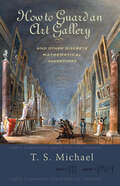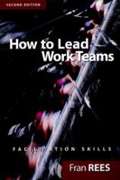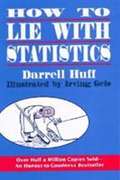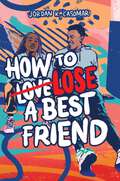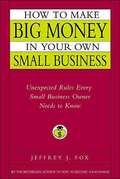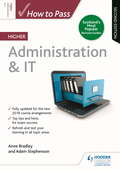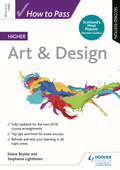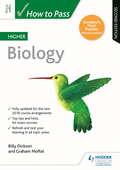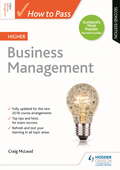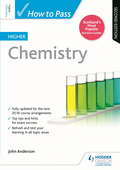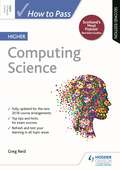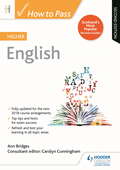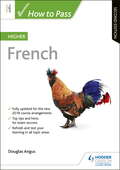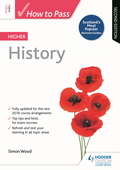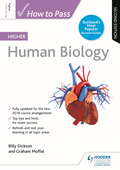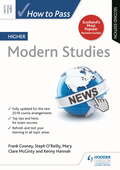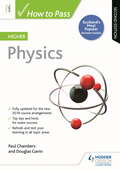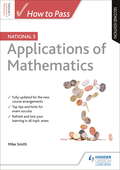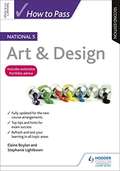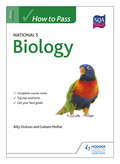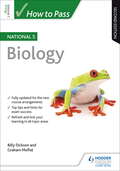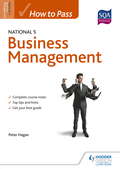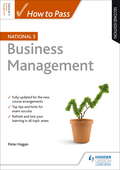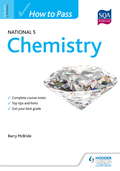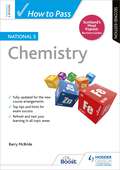- Table View
- List View
How to Guard an Art Gallery and Other Discrete Mathematical Adventures
by T.S. MichaelWhat is the maximum number of pizza slices one can get by making four straight cuts through a circular pizza? How does a computer determine the best set of pixels to represent a straight line on a computer screen? How many people at a minimum does it take to guard an art gallery?Discrete mathematics has the answer to these—and many other—questions of picking, choosing, and shuffling. T. S. Michael's gem of a book brings this vital but tough-to-teach subject to life using examples from real life and popular culture. Each chapter uses one problem—such as slicing a pizza—to detail key concepts about counting numbers and arranging finite sets. Michael takes a different perspective in tackling each of eight problems and explains them in differing degrees of generality, showing in the process how the same mathematical concepts appear in varied guises and contexts. In doing so, he imparts a broader understanding of the ideas underlying discrete mathematics and helps readers appreciate and understand mathematical thinking and discovery.This book explains the basic concepts of discrete mathematics and demonstrates how to apply them in largely nontechnical language. The explanations and formulas can be grasped with a basic understanding of linear equations.
How to Lead Work Teams
by Fran ReesWhile the first edition of this guide, published in 1991, focused on making the transition from "manager" to "team leader," this latest edition explores the idea of leading teamwork in dynamic, change- driven organizations. The need for facilitative leaders is greater now because managers are working in faster-paced arenas, in more volatile markets, with fewer precedents and greater consequences. The guide is intended for team leaders, project managers, HR professionals, organization consultants, trainers, and anyone who must take a leadership role to get their job done. Rees is a Phoenix-based consultant who specializes in team development, team leadership, and facilitation training. Annotation c. Book News, Inc., Portland, OR (booknews.com)
How to Lie with Statistics
by Darrell Huff Irving GeisA 1954 classic that continues to dispel false beliefs and inform the statistically naive. Huff's direct and witty style exposes how advertisers, government and the media mislead their audiences through the misuse of statistics. Huff then explains how the reader can see through the smoke and mirrors to get to the real meaning-- if any-- of what is presented. Annotation c. by Book News, Inc., Portland, Or.
How to Lose a Best Friend
by Jordan K. CasomarThis &“important and necessary book for our time&” (Amber Smith, New York Times bestselling author of The Way I Used to Be) confronts the myth of the friendzone as a boy in love with his best friend feels he&’s owed a chance at romance—and she&’s the only one in their lives who disagrees.For as long as anyone can remember, Zeke Ladoja and Imogen Parker have been best friends. Their classmates, their parents, and even the school custodian think that they&’re meant to be together. And that&’s exactly what Zeke wants: for Gen to be his girlfriend. Now that she&’s about to be sixteen (and allowed to date), Zeke is finally going to tell her how he feels—in front of everyone at her birthday party. Imogen loves Zeke with all her heart, but only as a friend. The pressure to be with Zeke has sometimes been overwhelming, but up to this point, she&’s been able to manage it. Then she falls for the new boy, Trevor Cook, and she knows the news will devastate Zeke. The last thing she wants to do is hurt her best friend, but she also resents the fact that no one seems to care about what she wants. The night of Gen&’s party, everything goes wrong. There&’s backlash, most of it directed at Gen, and Zeke feels emboldened. He isn&’t about to give up on his feelings, and he&’ll do whatever it takes to prove that she made the wrong choice…even if it means destroying their friendship. But Gen isn&’t about to give up on fighting for herself and the freedom to love the boy she wants, not the boy she&’s expected to be with.
How to Make Big Money in Your Own Small Business: Unexpected Rules Every Small Business Owner Needs to Know
by Jeffrey J. FoxEver dream of starting your own business? According to USA Today, more than 47 million people want to own their own businesses and over 20 million actually do. In How to Make Big Money in Your Own Small Business, bestselling business author Jeffrey Fox offers sound rules to succeeding in small business, whether you're running a bookstore, consulting business, or restaurant. In short chapters that range from administration and cash flow to marketing and hiring, Fox reminds entrepreneurs what's important and what's not, what makes a business succeed, and what causes it to fail.
How to Pass Higher Administration & IT: Second Edition Epub
by Adam Stephenson Anne BradleyExam Board: SQA Level: Higher Subject: Administration & IT First Teaching: August 2018 First Exam: May 2019Get your best grade with comprehensive course notes and advice from Scotland's top experts, fully updated for the latest changes to SQA Higher assessment. How to Pass Higher Administration & IT Second Edition contains all the advice and support you need to revise successfully for your Higher exam. It combines an overview of the course syllabus with advice from top experts on how to improve exam performance, so you have the best chance of success.- Revise confidently with up-to-date guidance tailored to the latest SQA assessment changes - Refresh your knowledge with comprehensive, tailored subject notes- Prepare for the exam with top tips and hints on revision techniques- Get your best grade with advice on how to gain those vital extra marks
How to Pass Higher Art & Design: Second Edition Epub
by Elaine Boylan Stephanie LightbownExam Board: SQA Level: Higher Subject: Art & Design First Teaching: August 2018 First Exam: May 2019Get your best grade with comprehensive course notes and advice from Scotland's top experts, fully updated for the latest changes to SQA Higher assessment. How to Pass Higher Art & Design Second Edition contains all the advice and support you need to revise successfully for your Higher exam. It combines an overview of the course syllabus with advice from top experts on how to improve exam performance, so you have the best chance of success.- Revise confidently with up-to-date guidance tailored to the latest SQA assessment changes - Refresh your knowledge with comprehensive, tailored subject notes- Prepare for the exam with top tips and hints on revision techniques- Get your best grade with advice on how to gain those vital extra marks
How to Pass Higher Biology: Second Edition Epub (How To Pass - Higher Level Ser.)
by Graham Moffat Billy DicksonExam Board: SQA Level: Higher Subject: Biology First Teaching: August 2018 First Exam: May 2019Get your best grade with comprehensive course notes and advice from Scotland's top experts, fully updated for the latest changes to SQA Higher assessment.How to Pass Higher Biology Second Edition contains all the advice and support you need to revise successfully for your Higher exam. It combines an overview of the course syllabus with advice from top experts on how to improve exam performance, so you have the best chance of success.- Revise confidently with up-to-date guidance tailored to the latest SQA assessment changes - Refresh your knowledge with comprehensive, tailored subject notes- Prepare for the exam with top tips and hints on revision techniques- Get your best grade with advice on how to gain those vital extra marks
How to Pass Higher Business Management: Second Edition Epub
by Craig McLeodExam Board: SQA Level: Higher Subject: Business Management First Teaching: August 2018 First Exam: May 2019Get your best grade with comprehensive course notes and advice from Scotland's top experts, fully updated for the latest changes to SQA Higher assessment. How to Pass Higher Business Management Second Edition contains all the advice and support you need to revise successfully for your Higher exam. It combines an overview of the course syllabus with advice from a top expert on how to improve exam performance, so you have the best chance of success.- Revise confidently with up-to-date guidance tailored to the latest SQA assessment changes - Refresh your knowledge with comprehensive, tailored subject notes- Prepare for the exam with top tips and hints on revision techniques- Get your best grade with advice on how to gain those vital extra marks
How to Pass Higher Chemistry: Second Edition Epub
by John AndersonExam Board: SQA Level: Higher Subject: Chemistry First Teaching: August 2018 First Exam: May 2019Get your best grade with comprehensive course notes and advice from Scotland's top experts, fully updated for the latest changes to SQA Higher assessment.How to Pass Higher Chemistry Second Edition contains all the advice and support you need to revise successfully for your Higher exam. It combines an overview of the course syllabus with advice from a top expert on how to improve exam performance, so you have the best chance of success.- Revise confidently with up-to-date guidance tailored to the latest SQA assessment changes - Refresh your knowledge with comprehensive, tailored subject notes- Prepare for the exam with top tips and hints on revision techniques- Get your best grade with advice on how to gain those vital extra marks
How to Pass Higher Computing Science: Second Edition Epub (How To Pass - Higher Level Ser.)
by Greg ReidExam Board: SQA Level: Higher Subject: Computing Science First Teaching: August 2018 First Exam: May 2019 Get your best grade with comprehensive course notes and advice from Scotland's top experts, fully updated for the latest changes to SQA Higher assessment. How to Pass Higher Computing Science Second Edition contains all the advice and support you need to revise successfully for your Higher exam. It combines an overview of the course syllabus with advice from a top expert on how to improve exam performance, so you have the best chance of success.- Revise confidently with up-to-date guidance tailored to the latest SQA assessment changes - Refresh your knowledge with comprehensive, tailored subject notes- Prepare for the exam with top tips and hints on revision techniques- Get your best grade with advice on how to gain those vital extra marks
How to Pass Higher English: Second Edition Epub
by Ann BridgesExam Board: SQA Level: Higher Subject: English First Teaching: August 2018 First Exam: May 2019Get your best grade with comprehensive course notes and advice from Scotland's top experts, fully updated for the latest changes to SQA Higher assessment. How to Pass Higher English Second Edition contains all the advice and support you need to revise successfully for your Higher exam. It combines an overview of the course syllabus with advice from a top expert on how to improve exam performance, so you have the best chance of success.- Revise confidently with up-to-date guidance tailored to the latest SQA assessment changes - Refresh your knowledge with comprehensive, tailored subject notes- Prepare for the exam with top tips and hints on revision techniques- Get your best grade with advice on how to gain those vital extra marks
How to Pass Higher French: Second Edition Epub
by Douglas AngusExam Board: SQA Level: Higher Subject: French First Teaching: August 2018 First Exam: May 2019Get your best grade with comprehensive course notes and advice from Scotland's top experts, fully updated for the latest changes to SQA Higher assessment. How to Pass Higher French Second Edition contains all the advice and support you need to revise successfully for your Higher exam. It combines an overview of the course syllabus with advice from a top expert on how to improve exam performance, so you have the best chance of success.- Revise confidently with up-to-date guidance tailored to the latest SQA assessment changes - Refresh your knowledge with comprehensive, tailored subject notes- Prepare for the exam with top tips and hints on revision techniques- Get your best grade with advice on how to gain those vital extra marks
How to Pass Higher History: Second Edition Epub
by Simon WoodExam Board: SQA Level: Higher Subject: History First Teaching: August 2018 First Exam: May 2019Get your best grade with comprehensive course notes and advice from Scotland's top experts, fully updated for the latest changes to SQA Higher assessment.How to Pass Higher History Second Edition contains all the advice and support you need to revise successfully for your Higher exam. It combines an overview of the course syllabus with advice from top experts on how to improve exam performance, so you have the best chance of success.- Revise confidently with up-to-date guidance tailored to the latest SQA assessment changes - Refresh your knowledge with comprehensive, tailored subject notes- Prepare for the exam with top tips and hints on revision techniques- Get your best grade with advice on how to gain those vital extra marks
How to Pass Higher Human Biology: Second Edition Epub (How To Pass - Higher Level Ser.)
by Graham Moffat Billy DicksonExam Board: SQA Level: Higher Subject: Human Biology First Teaching: August 2018 First Exam: May 2019Get your best grade with comprehensive course notes and advice from Scotland's top experts, fully updated for the latest changes to SQA Higher assessment. How to Pass Higher Biology Second Edition contains all the advice and support you need to revise successfully for your Higher exam. It combines an overview of the course syllabus with advice from top experts on how to improve exam performance, so you have the best chance of success.- Revise confidently with up-to-date guidance tailored to the latest SQA assessment changes - Refresh your knowledge with comprehensive, tailored subject notes- Prepare for the exam with top tips and hints on revision techniques- Get your best grade with advice on how to gain those vital extra marks
How to Pass Higher Modern Studies: Second Edition Epub
by Frank Cooney Steph O'Reilly Mary Clare McGintyExam Board: SQA Level: Higher Subject: Modern Studies First Teaching: August 2018 First Exam: May 2019Get your best grade with comprehensive course notes and advice from Scotland's top experts, fully updated for the latest changes to SQA Higher assessment. How to Pass Higher Modern Studies Second Edition contains all the advice and support you need to revise successfully for your Higher exam. It combines an overview of the course syllabus with advice from top experts on how to improve exam performance, so you have the best chance of success.- Revise confidently with up-to-date guidance tailored to the latest SQA assessment changes - Refresh your knowledge with comprehensive, tailored subject notes- Prepare for the exam with top tips and hints on revision techniques- Get your best grade with advice on how to gain those vital extra marks
How to Pass Higher Physics: Second Edition
by Paul Chambers Douglas GavinExam Board: SQA Level: Higher Subject: Physics First Teaching: August 2018 First Exam: May 2019Get your best grade with comprehensive course notes and advice from Scotland's top experts, fully updated for the latest changes to SQA Higher assessment. How to Pass Higher Physics Second Edition contains all the advice and support you need to revise successfully for your Higher exam. It combines an overview of the course syllabus with advice from top experts on how to improve exam performance, so you have the best chance of success.- Revise confidently with up-to-date guidance tailored to the latest SQA assessment changes - Refresh your knowledge with comprehensive, tailored subject notes- Prepare for the exam with top tips and hints on revision techniques- Get your best grade with advice on how to gain those vital extra marks
How to Pass National 5 Applications of Maths: Second Edition Ebook
by Mike SmithExam Board: SQALevel: National 5Subject: MathsFirst Teaching: August 2017First Exam: May 2018Get your best grade with How to Pass National 5 Applications of Mathematics.Fully updated to account for the changes to the National 5 exam, this book contains all the advice and support you need to revise successfully. It combines an overview of the course syllabus with advice from a top expert on how to improve exam performance, so you have the best chance of success.- Refresh your knowledge with complete course notes- Prepare for the exam with top tips and hints on revision technique- Get your best grade with advice on how to gain those vital extra marks
How to Pass National 5 Art & Design: Second Edition
by Elaine Boylan Stephanie LightbownExam Board: SQALevel: National 5Subject: Art & DesignFirst Teaching: August 2017First Exam: May 2018Fully updated to account for the removal of Unit Assessments and the changes to the National 5 exam, this book contains all the advice and support you need to revise successfully. It combines an overview of the course syllabus with advice from top experts on how to improve exam performance, so you have the best chance of success.- Refresh your knowledge with complete course notes- Prepare for the exam with top tips and hints on revision technique- Get your best grade with advice on how to gain those vital extra marks
How to Pass National 5 Biology
by Graham Moffat Billy DicksonGet your best grade with the SQA endorsed guide to National 5 Biology.This book contains all the advice and support you need to revise successfully for your National 5 exam. It combines an overview of the course syllabus with advice from a top expert on how to improve exam performance, so you have the best chance of success. Refresh your knowledge with complete course notes Prepare for the exam with top tips and hints on revision technique Get your best grade with advice on how to gain those vital extra marks
How to Pass National 5 Biology: Second Edition
by Graham Moffat Billy DicksonExam Board: SQALevel: National 5Subject: BiologyFirst Teaching: August 2017First Exam: May 2018Fully updated to account for the removal of Unit Assessments and the changes to the National 5 exam, this book contains all the advice and support you need to revise successfully. It combines an overview of the course syllabus with advice from top experts on how to improve exam performance, so you have the best chance of success.- Refresh your knowledge with complete course notes- Prepare for the exam with top tips and hints on revision technique- Get your best grade with advice on how to gain those vital extra marks
How to Pass National 5 Business Management
by Peter HaganGet your best grade with the SQA endorsed guide to National 5 Business Management.This book contains all the advice and support you need to revise successfully for your National 5 exam. It combines an overview of the course syllabus with advice from a top expert on how to improve exam performance, so you have the best chance of success. Refresh your knowledge with complete course notes Prepare for the exam with top tips and hints on revision technique Get your best grade with advice on how to gain those vital extra marks
How to Pass National 5 Business Management: Second Edition
by Peter HaganExam Board: SQALevel: National 5Subject: BusinessFirst Teaching: August 2017First Exam: May 2018Get your best grade with the SQA endorsed guide to National 5 Business Management.Fully updated to account for the removal of Unit Assessments and the changes to the National 5 exam, this book contains all the advice and support you need to revise successfully. It combines an overview of the course syllabus with advice from a top expert on how to improve exam performance, so you have the best chance of success.- Refresh your knowledge with complete course notes- Prepare for the exam with top tips and hints on revision technique- Get your best grade with advice on how to gain those vital extra marks
How to Pass National 5 Chemistry
by Barry McBrideGet your best grade with the SQA endorsed guide to National 5 Chemistry.This book contains all the advice and support you need to revise successfully for your National 5 exam. It combines an overview of the course syllabus with advice from a top expert on how to improve exam performance, so you have the best chance of success. Refresh your knowledge with complete course notes Prepare for the exam with top tips and hints on revision technique Get your best grade with advice on how to gain those vital extra marks
How to Pass National 5 Chemistry, Second Edition: Second Edition
by Barry McBrideExam Board: SQALevel: National 5Subject: ChemistryFirst Teaching: September 2017First Exam: Summer 2018This book contains all the advice and support you need to revise successfully for your National 5 exam. It combines an overview of the course syllabus with advice from a top expert on how to improve exam performance, so you have the best chance of success.- Refresh your knowledge with complete course notes- Prepare for the exam with top tips and hints on revision technique- Get your best grade with advice on how to gain those vital extra marks
